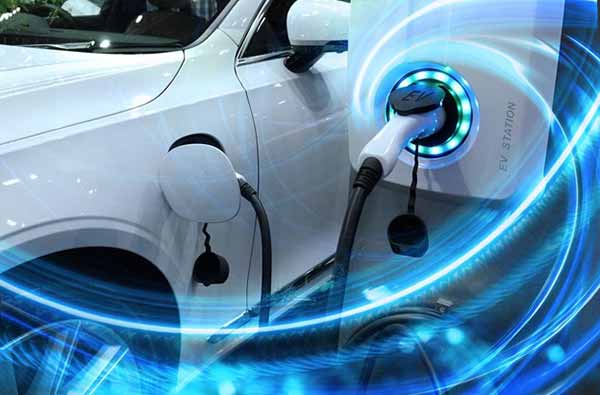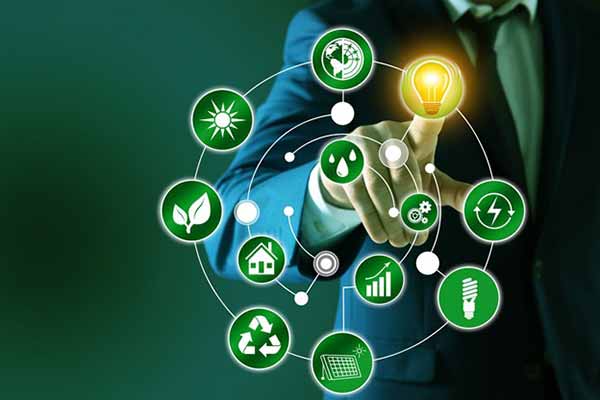Energy efficiency is a hot topic, especially given climate change and scarce energy resources. So, just what does it mean to be energy-efficient? Simply put, energy efficiency means making the most of your energy consumption or using no more energy than you need to get the job done.
However, energy efficiency is often confused with energy conservation. Energy conservation means avoiding energy use or energy waste. Energy waste can be leaving lights on in an empty room or heating an empty house.
Being energy-efficient is about so much more than cutting your energy costs, though that’s a great benefit of energy efficiency. We can achieve energy efficiency by using energy-efficient appliances, light bulbs, furnaces, and air conditioning. It also means actions that may not come readily to mind, such as making sure your car is in optimum working order or taking shorter showers.
In this article, we’ll look at how we use energy and how we can be more energy-efficient. We’ll also share some energy facts along the way.
What Do We Mean by Energy?
Energy is a resource, whether it’s produced from fossil fuels or clean-energy technologies. Our lights, heating and cooling, and machinery require power to work (we define power as relative to how quickly the energy is used).
Fossil fuels such as oil, natural gas, and coal are primary energy sources. They produce the necessary energy to generate electricity (secondary energy), heat our homes, and fuel our vehicles. Nuclear energy and renewable energy are also primary energy sources.
People generally use British thermal units (BTU) when comparing different energy sources. BTUs measure heat content. One BTU is the amount required to heat a pound of water by 1 degree Fahrenheit when it’s in its most dense state (39 degrees Fahrenheit).
What Does Energy Efficiency Mean?
Energy efficiency refers to the ratio of output of performance, service, goods or energy, to input of energy, usually expressed in percentage. In simple terms, it means doing more work with less energy.
The benefits of energy efficiency include the cost savings realized by lowering your energy consumption. Energy savings also translate into greenhouse gas (GHG) emission reductions.
One analyst, Richard Beadle, considered the broader impact of energy efficiency. He argues that emissions reductions also reduce healthcare costs through lower GHG emissions. In addition, he suggests that energy efficiency will also boost job creation.
Who Is the World’s Top Primary Energy Consumer?
China was the global leader in primary energy consumption in 2020, using 145.56 exajoules (an exajoule is 1 quintillion joules), nearly double America’s energy use of 87.79 EJ. But, Americans have nothing to brag about; the third leading energy consumer, India, uses only 31.98 EJ.
However, primary energy consumption was down 4.5% in 2020, although renewables — wind, solar, and hydroelectricity — grew. The most significant drop in energy consumption since 1945 was led by the U.S., India, and Russia. By contrast, China increased its primary energy consumption by 2.1%.
What’s the Energy Consumption of the Average American?
According to the U.S. Energy Information Administration, an average American consumed about 64 million BTUs in 2019. HVAC systems — heating, ventilation, and air conditioning — accounted for just over half of that consumption.
In 2020, each American consumed 252 cubic feet of natural gas, 2.3 gallons of oil, and 7.89 pounds of coal, daily. In addition, residential electricity consumption was 12.1 kilowatt-hours (kWh) per person per day.
Are Electric Vehicles Energy-Efficient?
On average, an all-electric vehicle (AEV) is more fuel-efficient than a traditional gas-powered vehicle. AEVs convert 59-62% of their energy to power compared to 17-21% for gas-powered vehicles. Plug-in electric hybrids (PHEVs) are 30-60% more fuel-efficient than gas-powered vehicles. In addition to cost-effective energy efficiency, state and federal incentives may apply, and electric vehicles reduce your carbon footprint.
What Is a Carbon Footprint?
Our use of fossil-fuel energy contributes to our carbon footprint. Every person, organization, or business emits greenhouse gasses in their daily activities. Those emissions are called a carbon footprint. Usually, we measure a carbon footprint in terms of tons of carbon dioxide and greenhouse gas (GHG) emissions emitted annually. A carbon footprint includes direct emissions from power plants that use fossil fuels or transportation-related activities. It also consists of the fossil-fuel energy consumption involved in producing goods and services.
On average, an individual emits or is responsible for 16,000-22,000 pounds per year.
How Do I Calculate My Carbon Footprint?
You can get a good idea of your carbon footprint from simple calculations:
Multiply your:
- Annual electricity consumption by 105
- Yearly gas consumption by 105
- Annual oil consumption by 113
- Yearly vehicle mileage by .79
- Flights (4 hours or less) taken in the last year by 1,100
- Flights over 4 hours taken in the previous year by 4,400
- Add up everything to get your estimated carbon footprint
These calculations provide an estimate of your carbon footprint. Remember, all the goods and services you buy or use will add to your total. This amount is your secondary carbon footprint.
What Are Examples of Energy Efficiency?
Energy efficiency comes in many forms: from our large appliances to the standard light bulb. It also includes how our homes and offices work to save energy.
One easy way to become more energy-efficient is to make weatherization improvements to your home or commercial building. For example, weather-stripping, double-glazed windows, upgrading your insulation, and installing a smart thermostat can help you use less energy to maintain a comfortable interior environment — using less energy to do more.
The same goes for replacing incandescent light bulbs with LEDs or CFLs. They take less power to light your environment and often offer improvements in the quality of your interior lighting.
Other ways to achieve energy-efficiency improvements are upgrading HVAC systems or trading in less-efficient appliances for Energy Star-rated models.
What Is Energy Star?
Energy Star is a U.S. Environmental Protection Agency (EPA) and Department of Energy program. The program rates energy-efficient products, including appliances and HVAC systems. It also rates residential and commercial buildings for energy efficiency, assists local governments in developing energy-efficiency policies, and educates industries on best energy systems practices.
For example, an Energy Star refrigerator can save you as much as 15% on your energy bill. According to the EPA, an Energy Star refrigerator uses less energy than a 60-watt light bulb. That’s a lot of cooling power for minimal cost in energy and money!
For home heating and cooling savings, consider installing a heat pump. Because a heat pump uses the outside air to heat and cool your home, it doesn’t use fossil fuels. That translates to more significant energy savings for your budget and reduces GHG emissions.
Enter your ZIP Code and compare electricity rates
What Are the Benefits of an Energy-Efficient Economy?
The American Council for an Energy-Efficient Economy (ACEEE) is a non-profit organization that researches and helps to develop energy-efficiency policies. The council aims to promote a fairer way to become energy-efficient, involving job creation, economic growth, and greenhouse gas-emission reductions.
Similarly, the International Energy Agency (IEA) touts the benefits of energy efficiency as a cost-effective way to combat high energy prices and improve our energy security. Economic benefits include boosting local economies and cheaper energy technologies to generate and transmit energy — driving down costs for utilities and, ultimately, to you as an energy consumer.
What Are Some Energy-Efficiency Programs?
Energy-efficiency programs have a variety of sponsors and applications. Federal, state, and local governments may develop policies to improve energy efficiency. The scope includes everything from appliances and buildings to weatherization programs sponsored by your local utility.
Programs can address efficiency standards and measures to encourage efficient technologies in energy generation and use. Perhaps the best-known example is Energy Star, a federal efficiency-standards program. The program is one example of ways to incorporate energy-efficient technology into our daily lives, from appliances to weatherization.
Building codes can drive more significant efficiency improvements in new construction at the local level.
LEED-certified homes incorporate efficiency standards in design, materials, and structure to build green homes that use 20-30% less energy. LEED certification is verified by independent, third-party review. Rebates and other financial incentives can help drive efficiency upgrades and improvements to existing residential and commercial buildings alike.
Finally, your local utility can perform energy audits and suggest ways to reduce your energy consumption whether you’re a homeowner or business owner.
Why Does My Energy Consumption Matter?
Consuming less energy to do the same work has a multitude of benefits. But, for many people, the overriding consideration is their budget — cheaper energy bills mean more money in their pockets. However, your investment in energy efficiency has broader implications for the economy and the environment: jobs creation and combating climate change.
An American Council for an Energy-Efficient Economy (ACEEE) fact sheet outlines how jobs are created to build energy-efficiency upgrades. In addition to the actual construction jobs, called direct jobs, indirect jobs become available by producing and supplying the materials for construction. Not only that, those workers’ earnings are reinvested in the economy through their purchases of goods and services (induced jobs to manufacture goods and produce services). ACEEE calculates that 17 to 20 jobs result per $1 million invested in energy-efficiency projects.
In the U.S., about 40% of the total energy consumed is from generating electricity, according to the EPA. Regardless of how it’s created, electricity generation has some environmental impact on the land, air, and water. While fossil fuels are the most significant contributor to greenhouse gas emissions, even green technologies such as solar, geothermal, and wind impact our land use and the environment.
When you invest in energy efficiency measures, you’re creating jobs and saving money. You’re also reducing your impact on the environment and, ultimately, combating climate change.
Energy Efficiency: An Important Endeavor
Energy efficiency is essential for many reasons, ranging from personal financial savings to doing your part to save the planet. From job creation and economic growth to lowering greenhouse gas emissions, we all have important reasons to do our part to be more energy-efficient.
Want to learn more about how you can increase your own energy efficiency? Visit our blog where you’ll find more educational articles to learn about increasing your energy savings through home improvement measures, choosing your own power supplier, and more.
Brought to you by energysavings.com
All images licensed from Adobe Stock.
Featured image:



